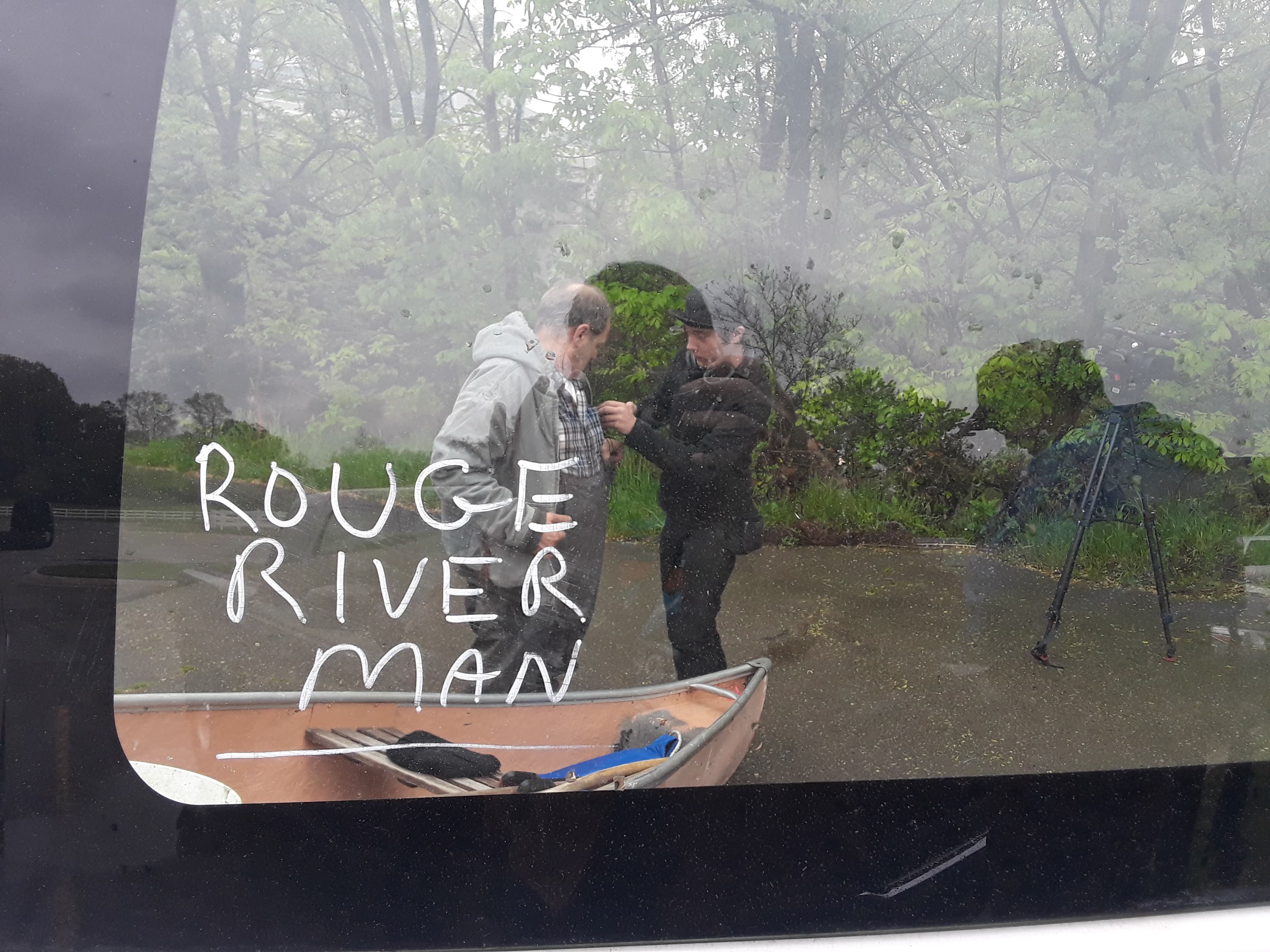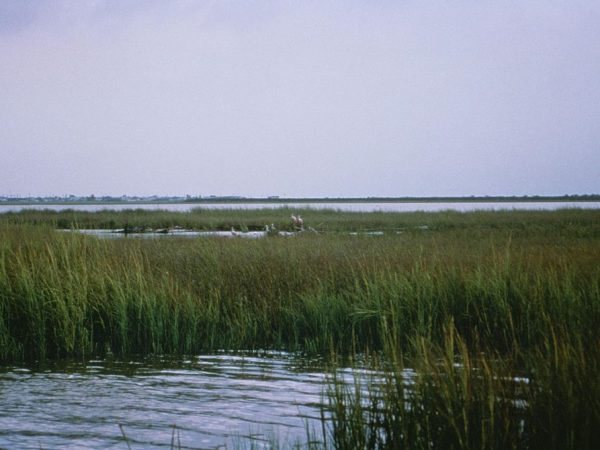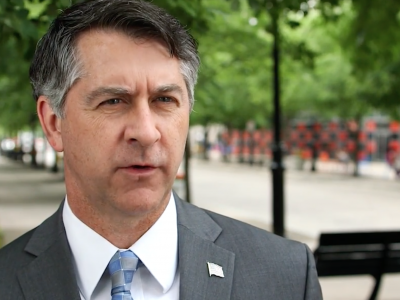
It was a four-person job.
Bryon Frady secured the rope to the log, shifting some of the debris pinning it down in the water. Dave Norwood, Jeff Vallender and Scott Tobias braced themselves on the shore and pulled on the count of three.
After a few rounds of counting — and a lot of effort — the log loosened enough that it could be tossed on land and out of the way of the Rouge River. The four moved on to the next log.
Frady, Norwood, Vallender and Tobias were cleaning up the Rouge as part of the Rouge Rescue, an annual river clean-up event that has been going on for 33 years. Along with removing the logs impacting the flow of the river, the volunteers were also removing the trash that collected at these log jams.
“The majority of trash is plastic bottles, cigarette lighters and straws,” Frady said. “The paper plates and things like that, those aren’t much of a problem. But I swear there’re a lot of plastic bottles in the water.”
After hours of steady work cutting branches, shifting logs and removing trash, the areas the volunteers worked on went from visibly blocked up to flowing smoothly and swiftly.
That was the impact of just four volunteers, and the 2019 Rouge Rescue had a total of more than 1,300 volunteers spread out over 16 sites. Together they cleaned up six log jams, removed 52.5 cubic yards of trash and removed 9,113 cubic yards of invasive species, among other things.
Despite the focus on trash and debris, what prompted the first Rouge cleanup was actually the industrial pollution affecting the river at the time.
The Rouge River in Detroit caught on fire for the second time on October 9, 1969, just months after the infamous Cuyahoga River fire. It had caught on fire for the first time some decades before. It was industrial waste that caused these fires, on the Rouge and the Cuyahoga.
“I think throughout the 20th century pollution and dumping into rivers was just seen as the cost of doing business and society had in many ways become indifferent to the cost of doing business, so when the Rouge (River) caught fire, it was relatively uncovered in terms of news media,” said Marie McCormick, executive director of Friends of the Rouge, a nonprofit that aims to restore and protect the Rouge River watershed.
Information on the 1969 Rouge fire is pretty sparse, but McCormick’s resources tell her it happened about 1,000 feet downriver from the I-75 bridge and burned 50 feet high.
“There were only a couple of little articles,” McCormick said. “There was actually only one known photograph of the actual fire. It was pretty sad.”
Then the 1972 Clean Water Act happened, and it helped clear the Great Lakes waterways by regulating the discharge of pollutants into the waters and the quality standards for those waters.
33 years of rescuing the Rouge River
While that legislation was being worked on, individuals were looking for other ways to get involved and help clean up the rivers.
In 1970, the first Rouge cleanup event—Rescue the Rouge—was held.
“We had to start somewhere, and people, citizens like you and I wanted to do something about it,” McCormick said. “You have ordinary citizens trying to do their part to clean up the river.”
In 1986, the Friends of the Rouge was finalized as a nonprofit, and it started organizing the Rouge Rescue cleanup events, which have been held annually ever since.
May 18 was when the 2019 Rouge Rescue was held, and 22 of the 29 total events happened that Saturday. This year had more than 1,300 volunteers were spread out over the 29 events, removing trash and invasive species, planting native vegetation and maintaining the river and trails.
“Since we started, we’ve had over 60,000 volunteers work with us and we’ve cleaned up almost a thousand different sites,” McCormick said. The trash removed from the river over those 33 years includes 64 vehicles, 21 boats, more than 1,700 tires, more than 500 shopping carts and more than 240 appliances, she said.
At one site on May 18, around 12 volunteers met at Ford Field Park in Dearborn, before dispersing so some would stay in the area to pick up trash in the park, while a handful of others made their way to Dearborn Hills Golf Course, from which they could launch kayaks and clear trash, debris and log jams directly from the Rouge River.
Frady was one of the Rouge Rescue volunteers to bring his kayak along to clear debris from the river. He started coming to the river every day to pick up trash and take his canoe out on the water after he retired. He was there so often that some kids started calling him the Rouge River Man, a moniker he has written on the back of his van.
“It gets to be depressing sometimes, because you’re out there cleaning and then people in the park they just put trash in the water and load it down,” Frady said.
Vallender, another volunteer with Friends of the Rouge, sees the constant trash accumulation as unavoidable.
“I think if we maybe removed the humans, the river would clean itself,” Vallender said. “But since this is not a natural system, the humans are always going to have an impact.”
That’s why Vallender wants to encourage a different kind of impact, by clearing the river and encouraging people to visit and paddle along it.
“We can help educate, we can help excite, and we can bring people to the river to enjoy the river itself,” he said.
The event has had an impact. Norwood, currently the city of Dearborn’s sustainability coordinator and a board member of Friends of the Rouge, has been involved with Rouge Rescue for nearly 20 years. He has noticed a difference in the river over those two decades.
“You’re seeing the river getting much cleaner,” Norwood said. “We’re seeing fish now that we haven’t seen in 20 years, that are migrating up the river and actually inhabiting the river, whether it’s bass, perch, northern pike, salmon, trout. They’re in here.”
Cleanup events get rid of trash and get people interested
Some of the money for the Rouge Rescue event came from a grant from the Michigan Department of Environment, Great Lakes, and Energy (EGLE)’s Volunteer River, Stream, and Creek Cleanup Program.
The program provides grants to units of local government for volunteer cleanup events like the Rouge Rescue and the Whetstone Brook Cleanup in Marquette, Michigan, which also happened on May 18.
Every year, $25,000 is available to the program, provided through the water quality license plates that are purchased. This year 14 groups received grants, and all the events can be found in a calendar online.
“Cleanups happen around the state with or without this grant, but it’s a way to promote and get people out and interested in this type of activity,” said Marcy Knoll Wilmes, a senior aquatic biologist with EGLE who handles the program. “These are people that want to be involved and see water quality and aesthetics improve, so we see it as a win-win. This gets the streams cleaned up, and people out there and interested in these streams.”
Removing the trash not only helps with the aesthetics of the rivers, but helps with water flow, fish passage and more, she added.
Getting people involved and connected was a large motivator for Megan McConville when she looked into organizing a cleanup of Whetstone Brook in Marquette.
McConville is an assistant professor at Northern Michigan University. New to the Marquette area and with “a passion for water and all things that flow,” McConville thought that a cleanup event would be a good way to bring people together and help the local waterway.
“I saw it as an opportunity to bring a variety of different parties, people from different communities, students, local nonprofits, businesses together for a simple event, but sometimes simplicity allows for bigger connections to be made,” she said.
Because the grant can only go to units of government, she worked with Marquette County Conservation District Manager Jaimi Cawley and Lynnae Branham, a student at Northern Michigan University who had worked on some research projects with McConville, to apply for the grant and put the event together.
That Saturday, 25 volunteers came to take part in the Whetstone Brook Cleanup.
McConville teaches two classes at Northern Michigan University, an introduction to environmental science class and an upper-level course on environmental impact assessment, and she brings up the Cuyahoga River fire in both.
“We talk about big oil spills and even the big BP disaster is becoming not as front and center in people’s memories,” she said. “Time just keeps moving. Hopefully, we don’t need these big disasters to remind ourselves.”
Local cleanups can be that first step to preventing larger disasters.
“I think when you talk about industry, it always starts in your backyard with the thing that you care and are passionate about, and those roots grow into bigger and larger processes,” McConville said.
The EGLE grant funded the event this year, but from the supportive reaction from the community and local businesses, McConville thinks the Whetstone Brook Cleanup could be more than a one-time event.
“While I think this grant maybe started this effort, it will be the community that keeps it going,” she said.







